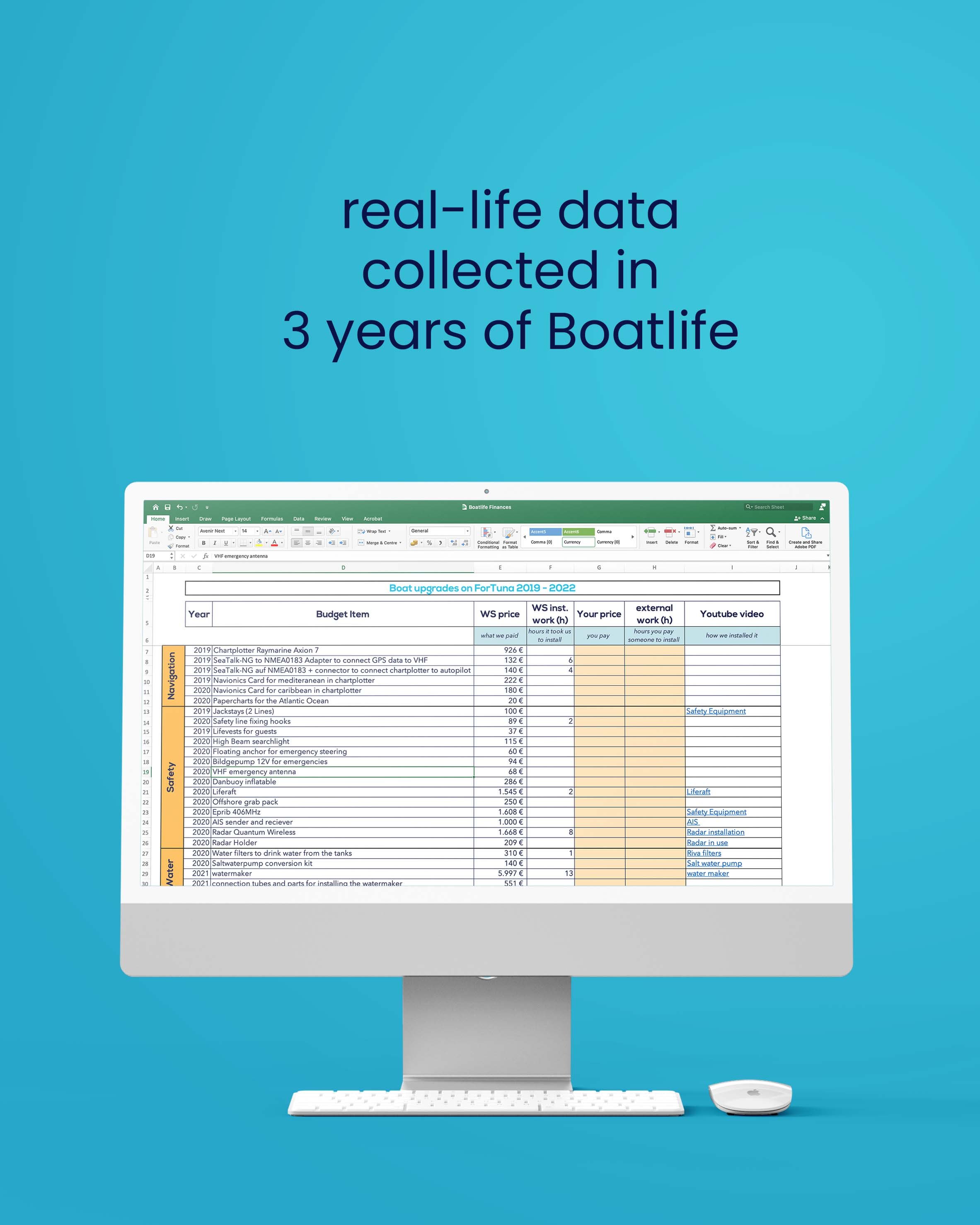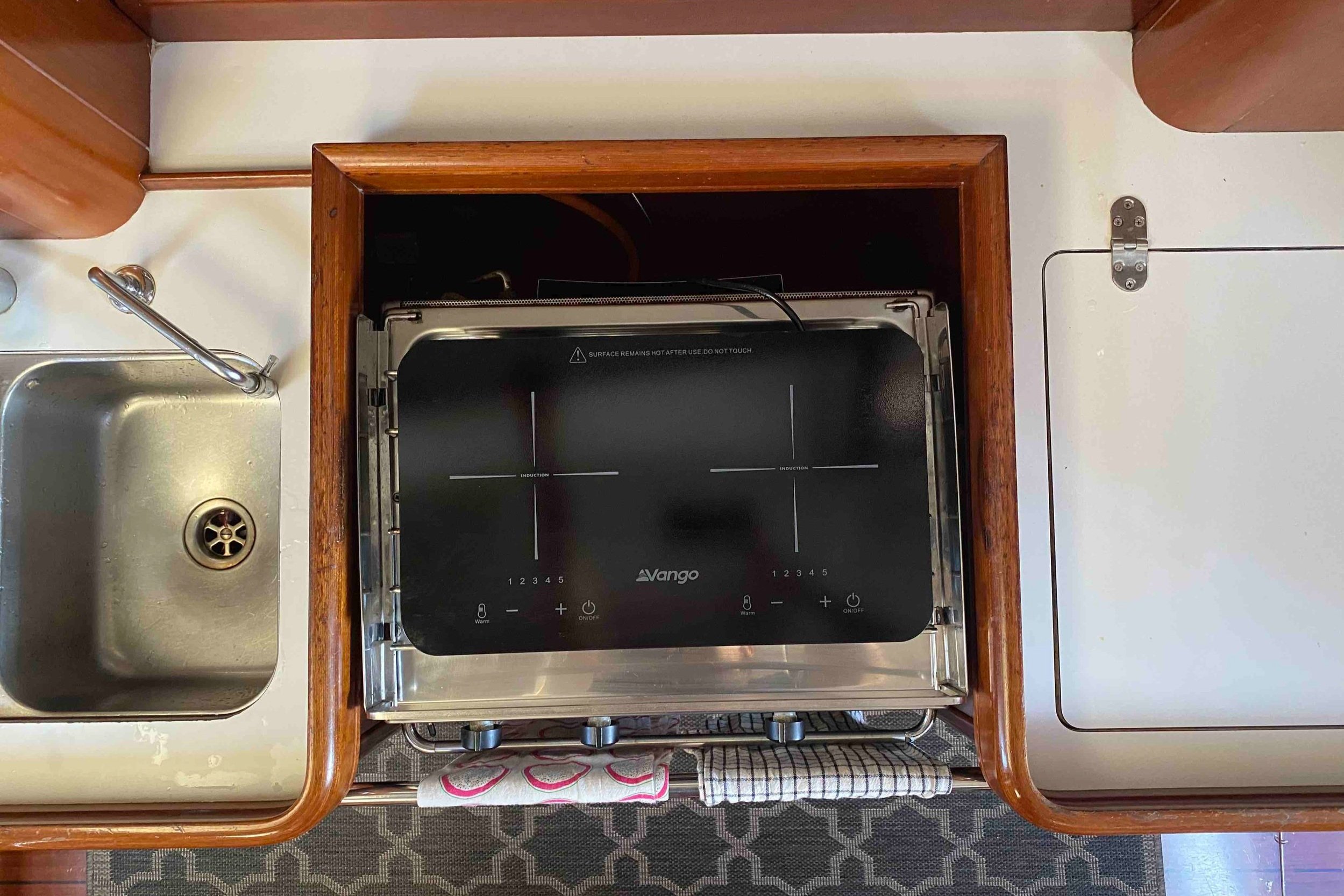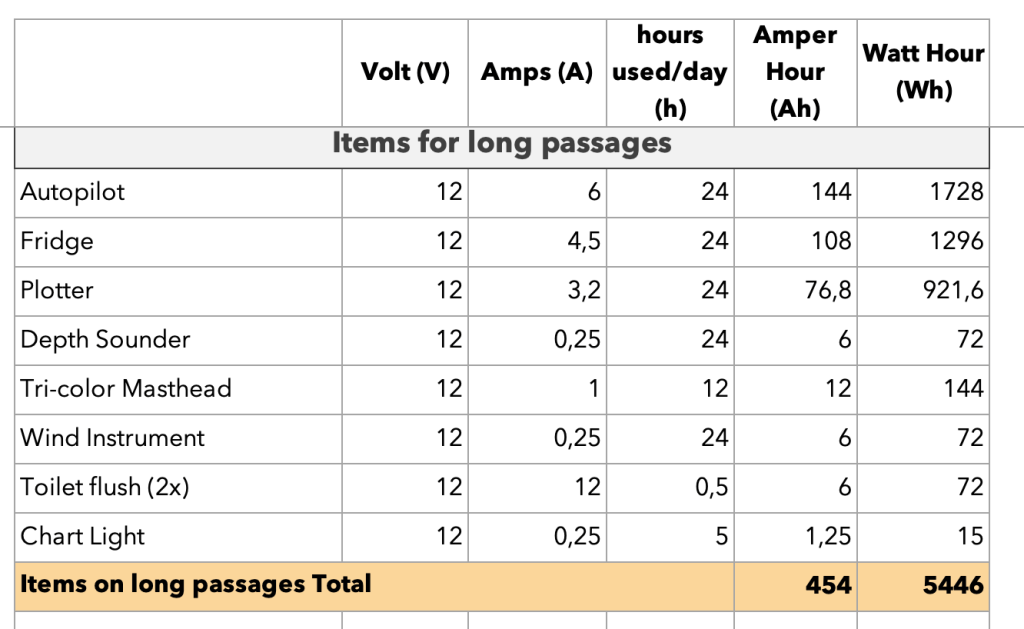Lead or lithium marine batteries for your boat?
Having electricity on a sailboat is not only convenient to charge smartphones we seem unable to live without, but it is crucial to keep all the safety and navigation equipment running. In our first blog post about electricity on sailboats, we discussed the basics of an electrical system on a boat. This blog post will focus on marine batteries, the heart of every electric boat set-up. We will primarily focus on the different possibilities on the market and explain why we choose marine lithium batteries.
Marine Battery types (Starter, deep cycle and dual-purpose marine batteries)
ForTuna, like most boats, has 2 marine battery systems. The central battery bank, also called "service" or "house" batteries, charges all major systems on board, from the fridge to the plotter. For this kind of battery bank, you want to use deep-cycle batteries. Deep-cycle marine batteries discharge slowly over a long period of time and withstand several hundred charging and discharging cycles.
How much does it costs to live on a sailboat?
The second battery system mostly made up of one battery, is the starter battery for the motor. The starter battery is only used to start the engine. It is a battery slightly different to ordinary batteries and can be referred to as a cranking battery. It features a higher crank voltage to support the high energy required in a short time to start the engine without damaging the battery itself.
Some boats have further battery division, such as a separate battery for an anchor winch or bow-thruster. On the other hand, some boats might not have space for two battery banks and can opt for dual-purpose marine batteries. Dual-purpose marine batteries can do the job of both starter batteries and deep cycle batteries. However, dual-purpose batteries have the reputation of being "master of none". Some won't provide enough power to start certain engines. Others last for far fewer cycles than typical deep cycle batteries.
In this blog, we will focus on "house" deep-cycle batteries.
Lead or Lithium (LiFePO4) marine batteries?
There are four different chemical types of marine batteries for your boat: wet cell (flooded), gel cell, absorbed glass mat (AGM), all lead-acid marine batteries, and lithium LiFePO4 marine batteries. Our first house/service batteries were "old-school" flooded lead acid batteries. They are the "oldest" batteries on the market and negatively excel in slow charging rates and heavyweight. AGM and gel lead batteries offer some improvements, like a lower self-discharge rate and won't leak. On the other hand, lithium batteries are a newer development. While they excel in size, weight and charging levels, they are also the most expensive ones. Let's take a closer look at the differences between the batteries.
How many batteries do you need?
Maintenance:
The only marine battery that needs maintenance is the wet cell lead battery. They require periodic inspection, and the cells must be topped-off with distilled water when levels get low.
Weight and size:
Lead batteries are so much heavier compared to lithium. For example, on ForTuna we had 2 lead batteries, which amounted to 360Ah. We converted the same space and weight into lithium batteries and now have 700h. So lead batteries are double the size and weight of lithium batteries, but what makes it all even worse is the charging aspect.
How to make money while sailing the world?
Charging and storage:
The real advantage of lithium batteries, besides their small size and weight, is their higher charging rate and their ability to discharge safely down to 20%, which means you can use 80% of the stored power! While most non-electricians like me would think that batteries should be able to provide all the energy they store, this is not the case. Flooded, gel or AGM batteries can only be discharged down 50%, or even less if you want to assure a stable voltage.
Stable voltage is essential for most electrical devices to function correctly and not get damaged. While most appliances on board declare they are not voltage sensitive, we experienced how they all struggled once our "old" lead batteries started to struggle below 80% charge, no matter if fridge, water pump, autopilot or lights. Since we installed the lithium batteries, everything works reliable, no matter if we have 100% or 40% charge.
In conclusion, while lithium batteries do not only allow you to access most of the stored energy but also at a stable voltage, lead batteries force you to carry extra weight for electricity, you can not even access.
Price and charging cycles/lifetime
Price is definitely a win on the lead batteries side. Especially wet cell batteries offer excellent opportunities to set up your battery bank at a reasonable price. However, their attractive pricing could turn out ugly when considering how often you'll have to replace them. Lead batteries offer roughly 500 discharge/charge cycles, while Lithium Iron Phosphate batteries can be cycled up to 3,500 times.
This means that lead acid marine batteries only last around 2 to 4 years, while marine lithium batteries might even last longer than most boats.
how much does it costs to live on a sailboat?
Conclusion
This blog post might seem slightly biased towards lithium batteries, and we will not deny it we love our new battery bank. However, we admit that our lead batteries have brought us very far, and we can recommend them for smaller wallets or less remote places. While we sailed in the Mediterranean Sea, we did not need to rely heavily on our marine batteries. Between bad weather and rolly anchorages, we ended in marinas and access to shore power at least once a week. Moreover, we had less equipment installed, and the distances we sailed in the Med were small compared to now, so our navigation system did need less energy and not for long periods of time.
Now that our boat has become our full-time home and office, long passages are part of our life and we intend to keep sailing switching to lithium batteries was an easy decision for us. We chose BattleBorn LiFePO4 Batteries and have been very positively surprised both by the support offered during the system's design and installation, and the battery's quality. If you would like to see how we installed them check out the video below.
we hope you enjoyed this blogpost. Feel free to write us an e-mail at info@whensailing.com if you have any questions.















